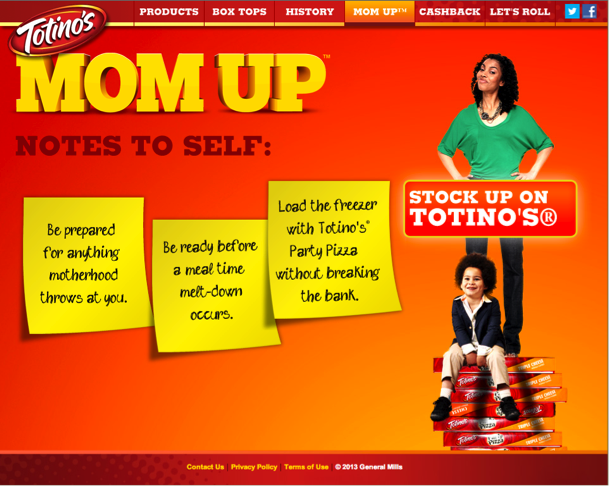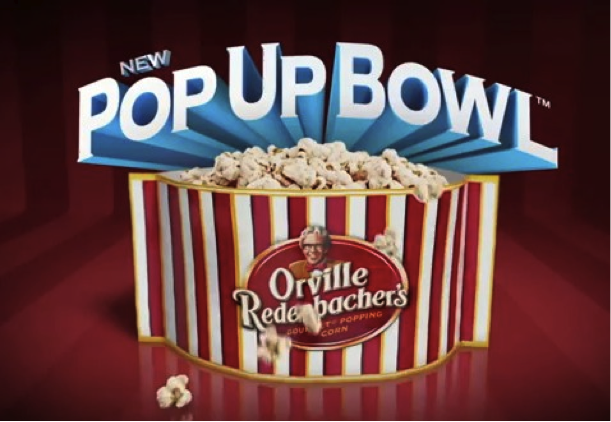We’ve all used a microwave at some point in our culinary adventures. From popcorn to pizza, soups to last night’s leftovers, the microwave has changed the “modern” kitchen and heavily influenced our food culture.

Photo: a microwave “Radarange” by Raytheon
The first microwave was invented after WWII and sold in 1947 as the “Radarange” by Raytheon. The “Radarange” was commercially used and aptly named since the microwave pretty much heats food with blasts of electromagnetic radiation. It was 5 feet 11 inches tall and weighed about 750 pounds. It wasn’t until 1955 that they became available for home use when the Tappan stove company licensed the technology from Raytheon and produced a home oven for a price of $1,295 (about $11,235 in today’s dollars), but it did not sell well due to price and it’s bulky design. In 1965, Raytheon acquired Amana and the first countertop Radarange were made available in 1967 for a mere $495 (about $3,450 in today’s dollars). By the 1970’s, other companies joined in the manufacture of microwaves. However, it was the Japanese that really grasped the technology and made smaller, more price friendly versions for home use. The Japanese models helped market penetration here in the US. By 1986, 25% of US households owned a microwave and by 1997, that number jumped to 90% as recorded by the U.S. Bureau of Labor Statistics. And this is how the microwavable food revolution came to be.

Photo: evolution of microwaves
Amidst the years of controversy over microwaved foods and a drive towards healthier, organics and even raw diets, the microwave is here to stay and microwavable foods are growing exponentially at market. Today, the global market for microwavable foods is poised to exceed $104 billion by the year 2017 (per Global Industry Analytics Inc.). US and Europe represent the largest worldwide markets for microwavable foods. This trend is driving the US microwavable package market to $2 billion by 2016, +9.4% growth per year (per Global Information Inc.).
Why is there such a boom in microwavable foods and packaging? Here’s a look at the consumer and the trends shaping our “nuked nation”.
The Consumer
If you think the consumer is the mutli-tasking, constantly connected, time-starved, digital millennial, you are only partially right. Microwaves were once a dorm room staple, but that’s not the case anymore. Surprisingly, millennials actually like to cook and dine out. The largest consumers of microwavable foods are “generation-mom”. Generation-mom is a cohort larger than any other generation, 82.5 million and growing, and is made up of millennials, gen-x, and boomers. They represent a $2.4 trillion spending market. Women, in general, are the principal shoppers for the household and this includes what’s for breakfast, lunch, dinner and snacks. They are also the most time-starved—juggling careers, families, and managing the household. Take a look at microwavable foods, and you will see that most of the brands are speaking to gen-mom.
One example is Totino’s Pizza Rolls, a frozen pizza that can easily be nuked by kids in the microwave as a snack. In the commercial, the kids want the Totino’s pizza rolls but have to call mom to find them in the freezer. Mom tells them exactly where they are and, score! It’s snack time for the kids.

Photo: Totino’s «Mom Up» offer
It’s Better The Next Day
Is that really true? Or is that just what “mom” says so we don’t waste food? Well, the microwave is one of the main appliances used to re-heat leftovers. Again, it’s not the millennials saving leftovers for tomorrow. According to National Eating Trends, a typical Millennial has 68 meals a year that contain a leftover item, but adults in their 30s to early 40s are using leftovers in 82 meals a year. The motivation? Convenience, cost, and better awareness of food waste in the nation. Because of this, we are seeing a trend towards more re-sealable, microwave safe food containers and microwave safe to-go packaging from restaurants. Glad and Hefty are big innovators in this department—both offering freezer, microwave and dishwasher safe re-usable containers. In this economy, as food prices go up and as reported by the Natural Resources Defense Council, we throw away nearly 40% of the food we purchase, it may be time to rethink leftovers and invest in re-useable, microwave safe containers. Last night’s dinner makes a great lunch today!

Photo: microwaveable containers
Set It and Forget It
One of the most obvious reasons people use a microwave is for the fast and easy convenience of having something warm to eat or drink. Besides re-heating yesterday’s leftovers, the microwave is a grocery store’s favorite appliance. Shelf-stable and frozen microwavable foods are on the rise due to convenience and cost effectiveness. Most microwavable foods are cheaper and significantly cut down on cooking time when compared to preparing the same meal out of scratch. You can heat a soup in 2 minutes for less than $2, make popcorn in 4 minutes for about a buck, or have a full pasta dinner in 1 for less than $3. A couple of interesting players in the market right now are Campbell’s and Barilla. Campbell’s offers a whole range of “soup on the go” as well as a “hipster” targeted line of microwavable pouch soups. Campbell’s Go bridges the microwavable convenience with gourmet flavors and pour to bowl consumption which feels more like cooking, which is a millennial hobby. Barilla recently introduced shelf stable pasta meals touted as “Chef Quality Italian Lunch In Just 1 Minute”. This leads us to the next trend.

Photo: frozen pasta Barilla
Gourmet “Ding!”
Microwave meals are advancing in technology and flavor. We’ve come a long way since General Mill’s first patented a microwavable popcorn bag in 1981. Today’s microwavable meals are all about gourmet flavor and even ethnic dining. From Campbell’s Go soups, which have flavors such as Moroccan Style Chicken with Chickpeas to Shiitake and Creamy Red Pepper with Smoked Gouda; flavors are getting more complex. Trader Joe’s offers flavors such as Chicken Gorgonzola, Wild Salmon in Yogurt and Mint Sauce, Aloo Chaat Kati Roll with a blend of potatoes, chickpeas, chaat masala (an Indian spice blend), and a sweet-tangy tamarind chutney. Lean Cuisine has Sesame Chicken, Butternut Squash Ravioli, and Ginger Garlic Stir Fry with Chicken. Asian flavors seem to be surging. Frozen Asian entrees accounted for $907.1 million last year according to The Nielsen Company. General Mills’ introduced Wanchai Ferry in late 2009, followed by Unilever’s P.F. Chang’s Home Menu. P.F. Chang’s ranks number 4 and Wanchai holds the number 7 spot in the multi-serve frozen dinners/entrees category. As our palates are becoming more complex and sophisticated, the gourmet and ethnic microwavable food market is providing a convenient and cost friendly way to enjoy unique flavors.

Photo: frozen gourmet food range
Healthy Zaps
Microwaves have had its fair share of bad press. Nuking your food has been controversial for years – from the safety of the food to how much nutrition is actually retained. However, the numbers prove that the pros still outweigh the cons. So how does the industry lose the negative microwave stigma and give it a healthy twist? Again, convenience and price but now add organic, natural and portion control. American’s always seem to be on some type of diet or are looking to eat healthier but they want it to be easy and simple. Microwavable meals cater to this consumer group easily. First of all, meals are usually single serving portions. Next, a plethora of healthy meals are branded specifically to communicate “healthy”, Lean Cuisine, Healthy Choice, Lean Pockets, Weight Watchers Smart Ones, to name a few. Then there are the organics, Organic Bistro, Wild Harvest, Amy’s Kitchen, PJ’s, Kashi, Seeds of Change, etc. And there are even fresh veggies from the produce department that are pouch steamed in the zapper like Green Line Quick and Easy green beans. The microwave isn’t a bad thing after all. Companies are making it easier and more convenient to nuke something healthy so you can get on the go.

Photo: frozen food’s packaging appeals to women
New Wave Packaging
We’re not living in Orbit City yet, but we’re close. As mentioned before, microwavable foods target gen-mom, women. There’s a design balance that must convey fresh, delicious, functional, easy and cost-friendly. For this reason, packages use a lot of red to capture the consumers’ attention, white for cleanliness, yellow to induce hunger and green to represent fresh. Images of the food are big and bold so you can see every ingredient. The tone of the language is directed towards women and moms. And when you get beyond the box, technology has made microwavable foods tremendously easy with minimal prep. In most cases, the food is packed in a microwave safe package that also serves as your dish. Just put the whole package directly into the microwave and like the Jetson’s, open the door and your snack or meal is ready to consume direct from the package.
One great example is Orville Redenbacher’s Pop Up Bowl. We’ve all had microwave popcorn and it’s usually pop in the bag and pour into a bowl. Orville Redenbacher has re-invented the wheel for microwave popcorn. As the popcorn pops, the bag becomes the bowl. Genius!

Photo: microwaveable pop corn packaging
Future “Smart-Oven”
Technology is taking the microwaves to the next level. Right now, our microwaves are equipped with cooking sensors that can pretty much cook anything to perfection. They are energy efficient and save us hours in the kitchen. But as technology is an ever evolving stride for the next best thing, we believe the future microwave will be a “smart-oven”. We will slowly take away the term “microwave” as it evolves to a healthier, smarter, more efficient appliance. The “smart-oven” will be Wi-Fi enabled. It will send you a text when the nuking is done, or give you the weather report as you heat up your breakfast wrap. It could even text you to let you know someone is home and cooking up a snack. The “smart-oven” will also be voice controlled. Just tell your “smart-oven” what you are cooking and it will automatically adjust the settings. You’ll also be able to leave messages for the family that automatically play when they come home and heat up their snack—for example, “call mom before you go to soccer practice”. The “smart-oven” will also keep track of what you have cooked in the past week and keep an ongoing grocery list for you. You can either press a button to automatically re-order from your local grocery store, print out the list, or have the list sent to your mobile device. We also predict that other shapes and sizes will be available. They will be customized for any dream kitchen. You’ll be able to cook the entire turkey plus all the side for thanksgiving in under an hour in the “smart-oven”! We’re definitely much closer to living in Orbit City than ever before. This technology is being developed in a lab somewhere right now, it’s just a matter of time.

Photo: a rendering from the Future Kitchen Report by Future Poll, a study commissioned by IKEA
Overview
We are a “Nuked Nation”. The microwave is here to stay and microwavable foods are poised for growth as cost, convenience, healthy eating, and technology come together to lessen the stigma of cooking in microwaves. We will continue to track these along with other trends in upcoming articles. If you would like to know more about Toniq, please email us at info@toniq.com or tweet us @brandeffervesce.
About the Author
Ms. Swanson founded Toniq in 1999 after leading several design firms to world-class status with her emotions-based, visual approach to brand strategy development. At Toniq, she continues to evolve her strategic expertise by seeking new ways to connect with consumers.
Swanson’s years of trend tracking, design management and research have coalesced in a theory of “Brand Effervescence ™” an innovative approach to brand building. This image-based approach is a synthesis of cultural anthropology, consumer trends research, marketing and design, and a study of the psychology of symbolism and color.
